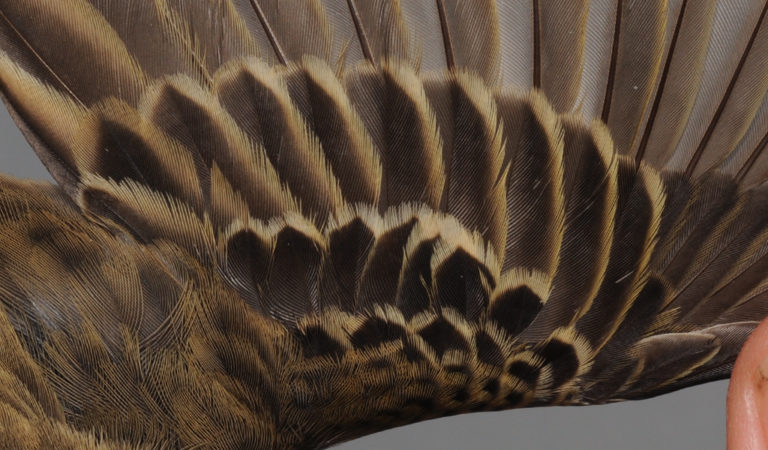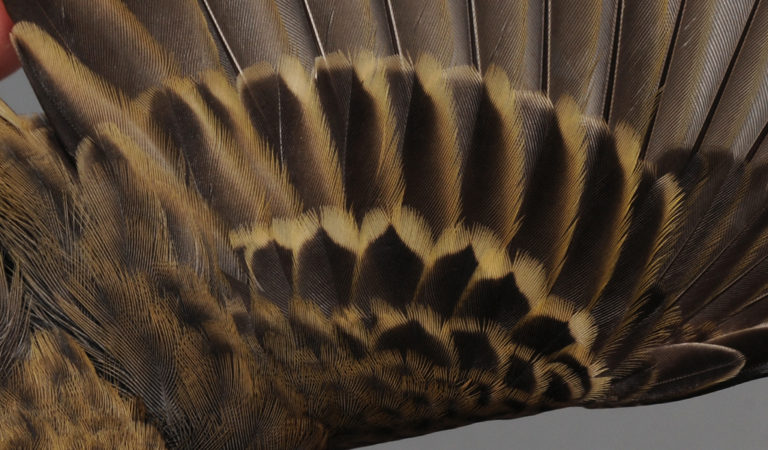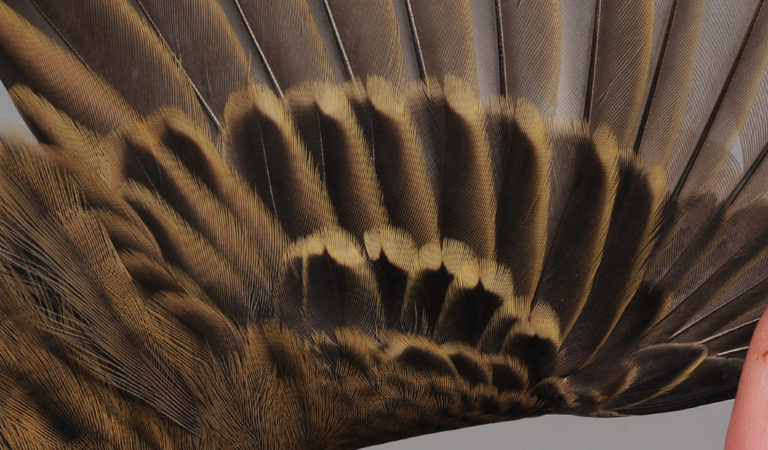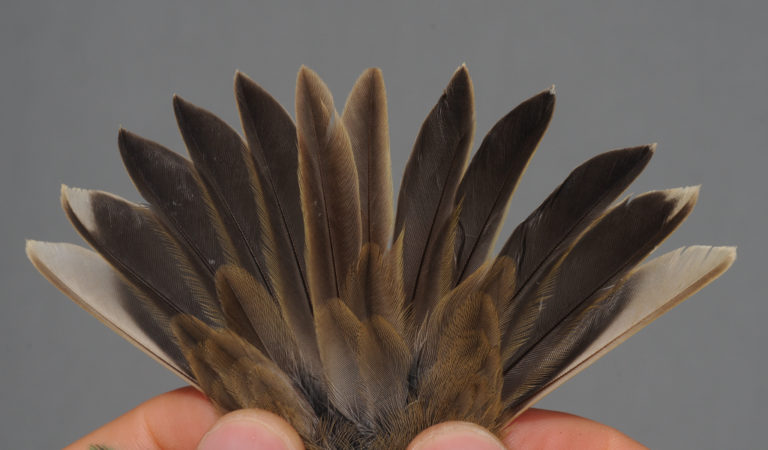

Tree Pipit
AGE – BEST CRITERIA:
In 1cy, a moult contrast is present in the wing. In most birds the contrast is situated within the LC and/or between post-juvenile LC and juvenile MC. A few birds may also show a moult contrast in MC, inner GC, TT or RR. Adult birds show a uniform and freshly moulted plumage.

1cy September. A dominantly juvenile wing, but note that most LC are post-juvenile (fresh and olive), contrasting to the lower row of LC that are slightly more worn and show pale buff tips. Note also that GC9 is moulted post-juvenile (fresh, with darker centre and darker buff tip and edge), contrasting to juvenile GC on both sides. The dark centre to the juvenile MC are rather triangular at the tip (compare to the 2cy+ to the right below). [1ET28961]

2cy+ September. A rather typical fresh adult wing showing uniform, dense and rather broad and square-shaped GC. Note the darker (and more glossy) centra and the slightly darker yellowish-buff tips and edges to both MC and GC. In this bird, the shape of the MC centra is not very different from juvenile feathers. [1ET28684]

2cy+ August. Another adult showing some variation. Note the shape of the dark MC centra: rather square-shaped with a narrow 'spike' at the tip. Note also that GC8-10 show a slightly different (darker) pattern than GC1-7. This 'false contrast' is sometimes more eye-cathing than here, but should not be mistaken for a moult contrast once the feather wear is examined. [1ET80003]

1cy September. Juvenile RR are generally slightly more narrow and more pointed than in adult, but there is a variation in shape and difficult birds are sometimes seen. The structure is often helpful: less dense, less glossy and somewhat paler brownish than fresh adult post-breeding feathers. Most birds include no RR in the post-juvenile moult but, rarely, single feathers (R1) may be included. [1ET28964]
More Anthus trivialis:
Ringers’ DigiGuide is sponsored by:
Hemsidan producerad i samarbete med
BirdLife Sverige